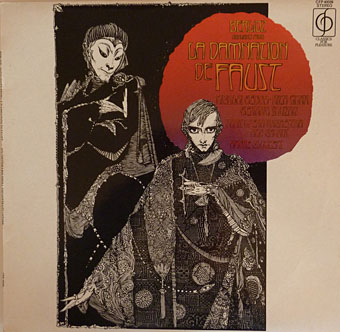
Hector Berlioz: Highlights From La Damnation De Faust (1960); Paris Opera Orchestra And Chorus, André Cluytens. Artwork: “I wish you had something else to do than torment me when I’m quiet” from Faust (1925).
Continuing an occasional series about artists or designers whose work has appeared on record sleeves. Harry Clarke would have been added to this list some time ago but it’s taken a while for Discogs to fill in the gaps ignored by its dominant core of techno-techno-techno obsessives. Clarke’s work is also much more visible today, as a result of which many of the releases here are very recent. The viral nature of internet popularity is a great thing for artists whose work can be shared and appreciated instantly. The drawback is demonstrated by the following albums, many of which recycle the same few drawings from Clarke’s Poe and Faust volumes. I’m sure the musicians who relish Clarke’s work for its grotesque or decadent qualities would find something equally appealing in his Swinburne illustrations if they sought them out. As before, this is probably an incomplete list so if anyone knows of other suitable candidates then please leave a comment.
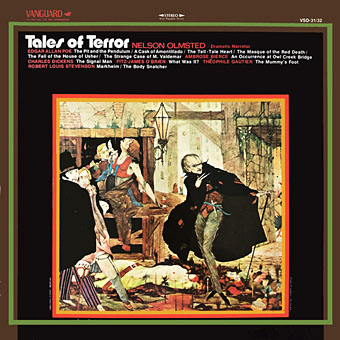
Tales of Terror (1971) read by Nelson Olmsted. Artwork: The Man of the Crowd from Tales of Mystery and Imagination (second edition, 1923).
A double album of readings from horror stories. I used to own this one, mainly for the cover since I don’t recall playing it very much. The gatefold interior features Clarke’s painting for The Fall of the House of Usher together with a note from beyond the grave by HP Lovecraft.
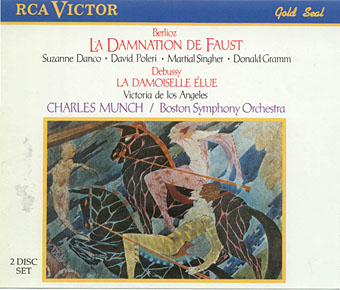
Hector Berlioz / Claude Debussy: La Damnation De Faust / La Damoiselle Elue (1988); Suzanne Danco, David Poleri, Martial Singher, Donald Gramm, Victoria De Los Angeles, Charles Munch, Boston Symphony Orchestra. Artwork: “Forward! Forward!—Faster! Faster!” from Faust (1925).
The classical labels are at least justified in their use of the Faust illustrations. This cropped painting is one of two pieces depicting Faust and Mephistopheles on horseback that suggest Clarke’s parallel career as a stained-glass artist.
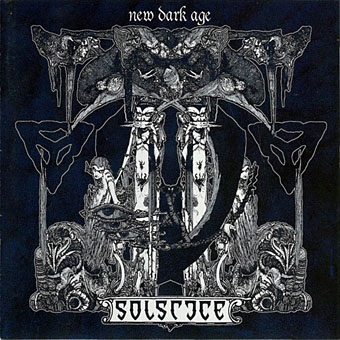
New Dark Age (1998) by Solstice. Artwork: collage of drawings from Faust (1925).
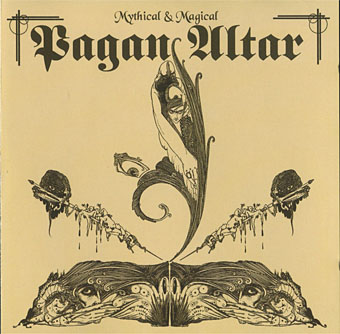
Mythical & Magical (2008) by Pagan Altar. Artwork: collage of drawings from Faust (1925).
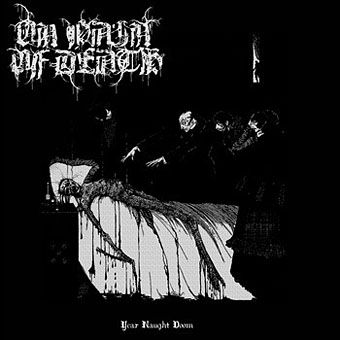
Year Naught Doom (2012) by On Pain Of Death. Artwork: The Facts in the Case of M. Valdemar from Tales of Mystery and Imagination (first edition, 1919).
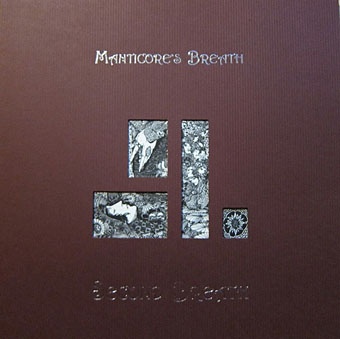
Second Breath (2013) by Manticore’s Breath. Artwork: Morella from Tales of Mystery and Imagination (first edition, 1919).
A die-cut outer sleeve shows details of the illustration which is revealed in full on the inner sleeve (below). More Clarke illustrations from Faust decorate the interior.
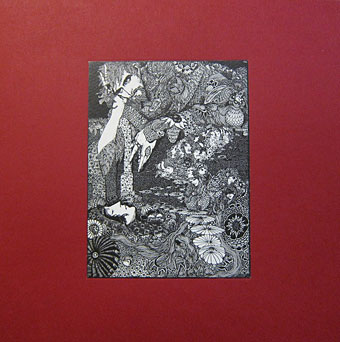
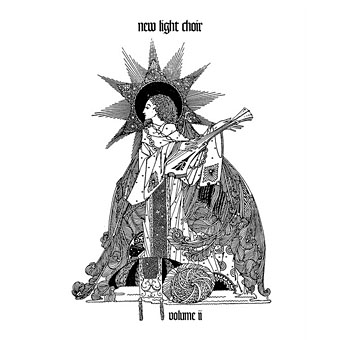
Volume II (2015) by New Light Choir. Artwork: Vignette from The Year’s at the Spring (1920).
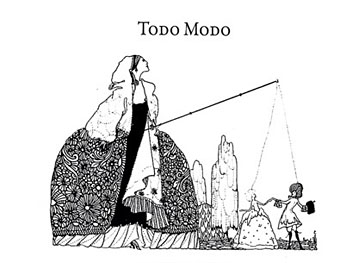
Todo Modo (2015) by Todo Modo. Artwork: Vignette from Fairy Tales of Charles Perrault (1922).
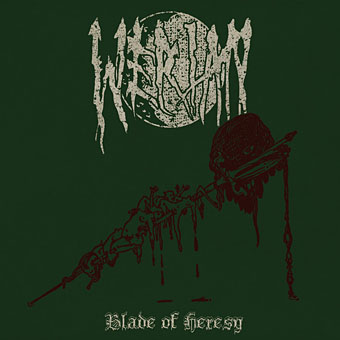
Blade Of Heresy (2016) by Werian. Artwork: Vignette from Faust (1925).
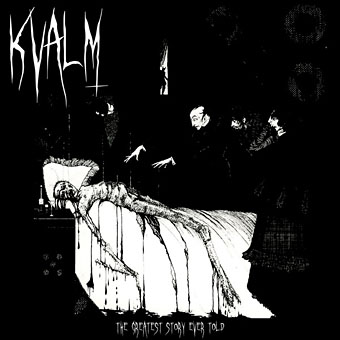
The Greatest Story Ever Told (2017) by Kvalm.
It may be “the greatest story ever told” but the cover design is almost identical to the On Pain Of Death album from only five years before.
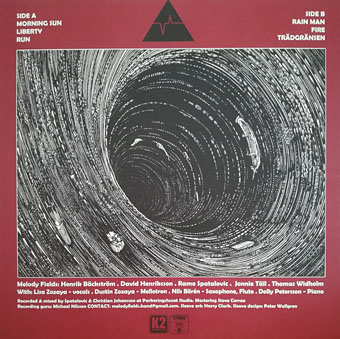
Melody Fields (2018) by Melody Fields. Artwork: Descent into the Maelström from Tales of Mystery and Imagination (first edition, 1919).
Clarke’s work is on the back cover only; the drawing has also been horizontally flipped.
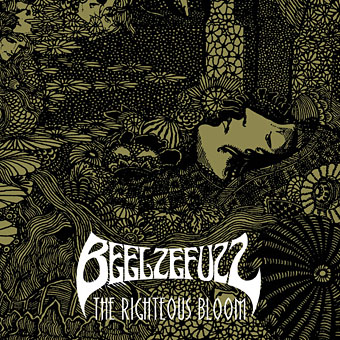
The Righteous Bloom (2018) by Beelzefuzz. Artwork: Morella from Tales of Mystery and Imagination (first edition, 1919).
Update: Added another album of horror readings from the Vanguard label. This one seems to be uncredited so didn’t turn up in previous searches.
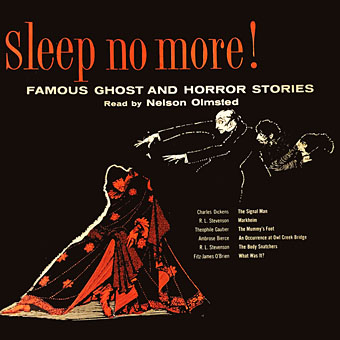
Sleep No More! Famous Ghost And Horror Stories (1956) read by Nelson Olmstead. Artwork: A collage of figures from Tales of Mystery and Imagination (first edition, 1919).
Elsewhere on { feuilleton }
• The album covers archive
• The illustrators archive
Previously on { feuilleton }
• Thomas Bodkin on Harry Clarke
• Harry Clarke: His Graphic Art
• Harry Clarke and others in The Studio
• Harry Clarke’s Fairy Tales of Charles Perrault
• Harry Clarke in colour
• The Tinderbox
• Harry Clarke and the Elixir of Life
• Cardwell Higgins versus Harry Clarke
• Modern book illustrators, 1914
• Illustrating Poe #3: Harry Clarke
• Strangest Genius: The Stained Glass of Harry Clarke
• Harry Clarke’s stained glass
• Harry Clarke’s The Year’s at the Spring
• The art of Harry Clarke, 1889–1931

Wondrous! As an aside, although I’m generally allergic to band names based on puns, I’m quite taken with Beelzefuzz – you know what you’re getting with a name like that.
The first time I encountered Clarke’s work was on the inner sleeve of The Fall’s Bend Sinister, which uses the illustration of Faust and Mephistopheles as part of a typically Fall-esque collage. For a while I thought that it was an original drawing, as the Faust looks quite a bit like a young Mark E Smith.
Ian: Indeed, although I’d have expected something more devilish on the cover.
Mike L: Thanks, that’s one I’d not seen before. Faust in that one also resembles the artist who had a similar fringe and large eyes. He put self-portraits into several drawings.
All the more ironic since I’ve read someplace (can’t recall now) that he preferred complete silence. I read that once he even found drawing by a river annoying due to the intrusive sound of moving water.
I’m not sure I’d want to draw to the primitive sounds of 1920s technology but then if you didn’t know any better it might seem attractive.
Clarke escaped to London on a couple of occasions to work on his illustration commitments in a hotel. In Dublin there were often too many demands from the stained-glass studio and its clients for him to concentrate.
Check out obscure death metal treasure “Diabolus In Musica” (1993) by the English band Dark Heresy — Harry Clarke in all his glory!